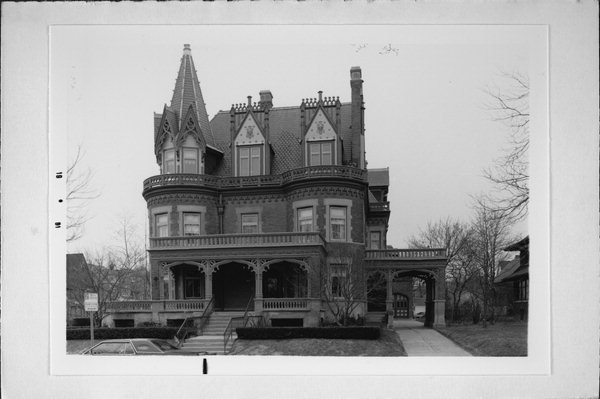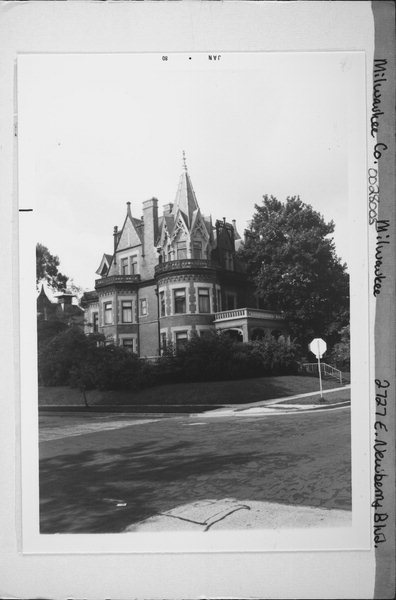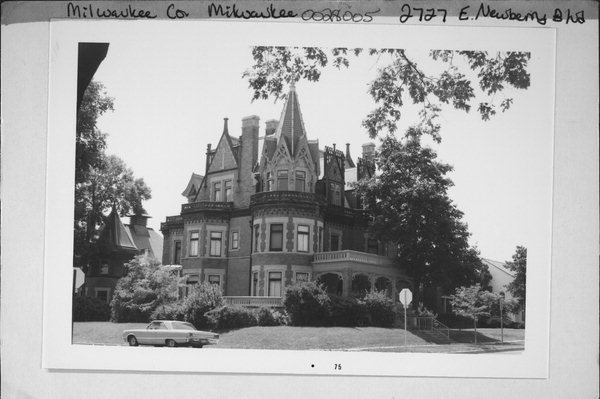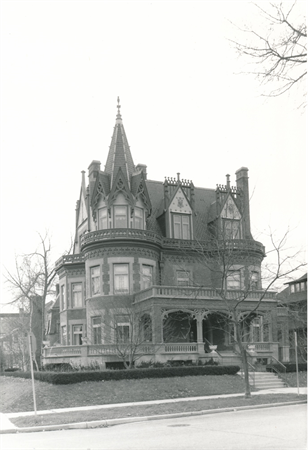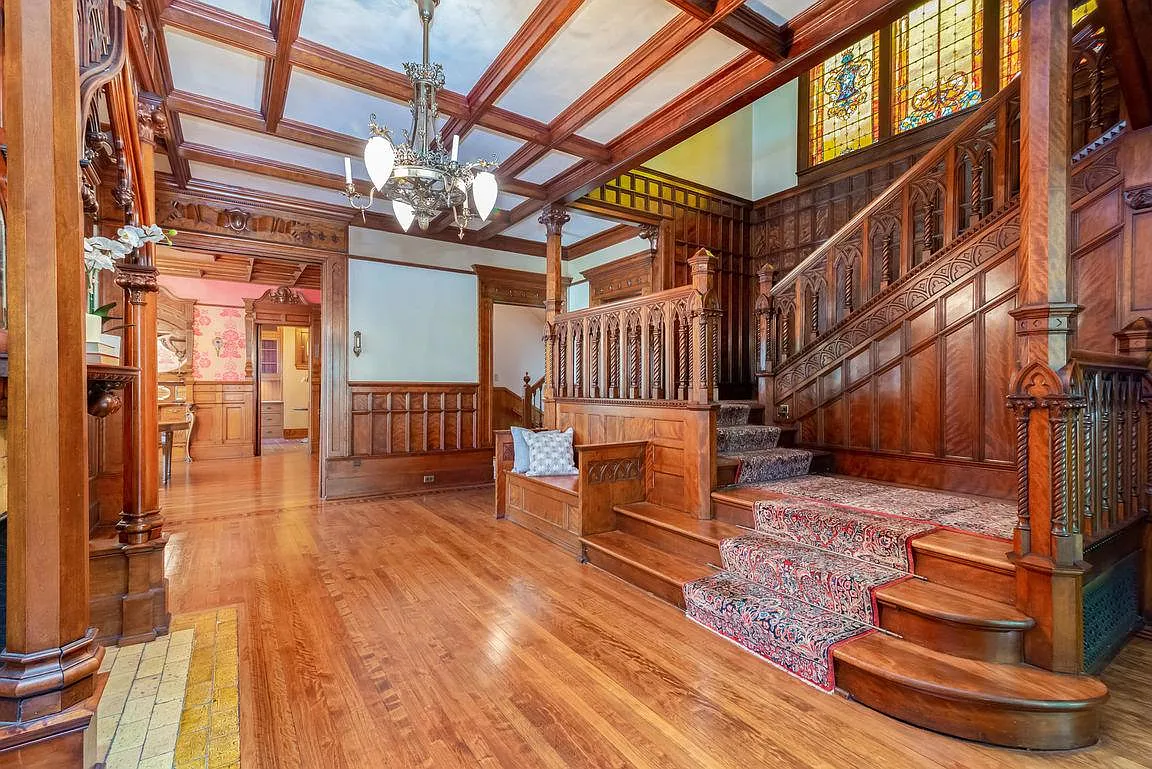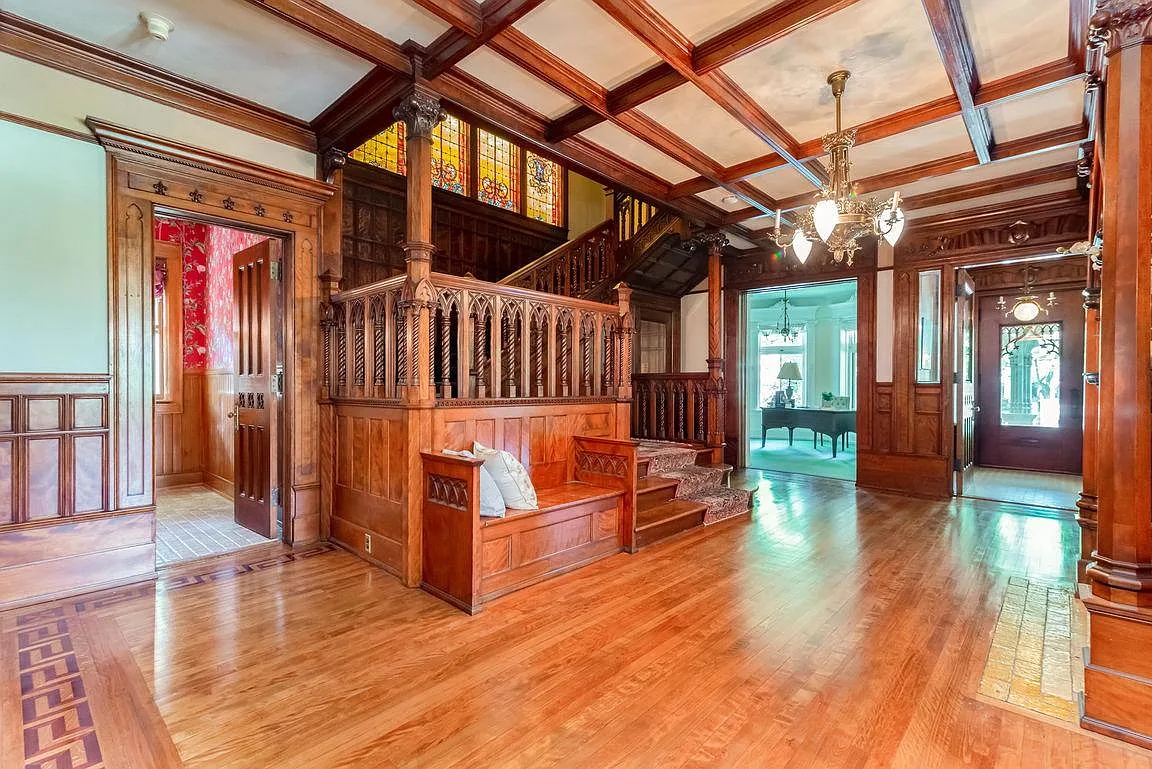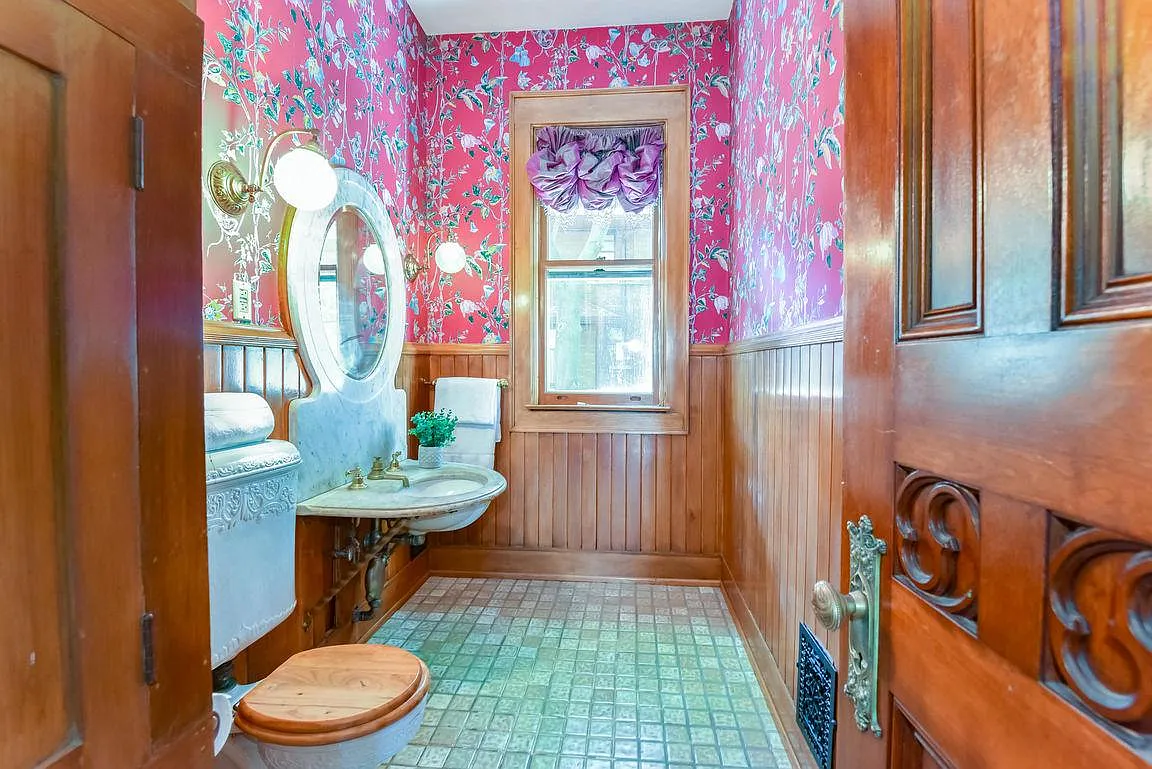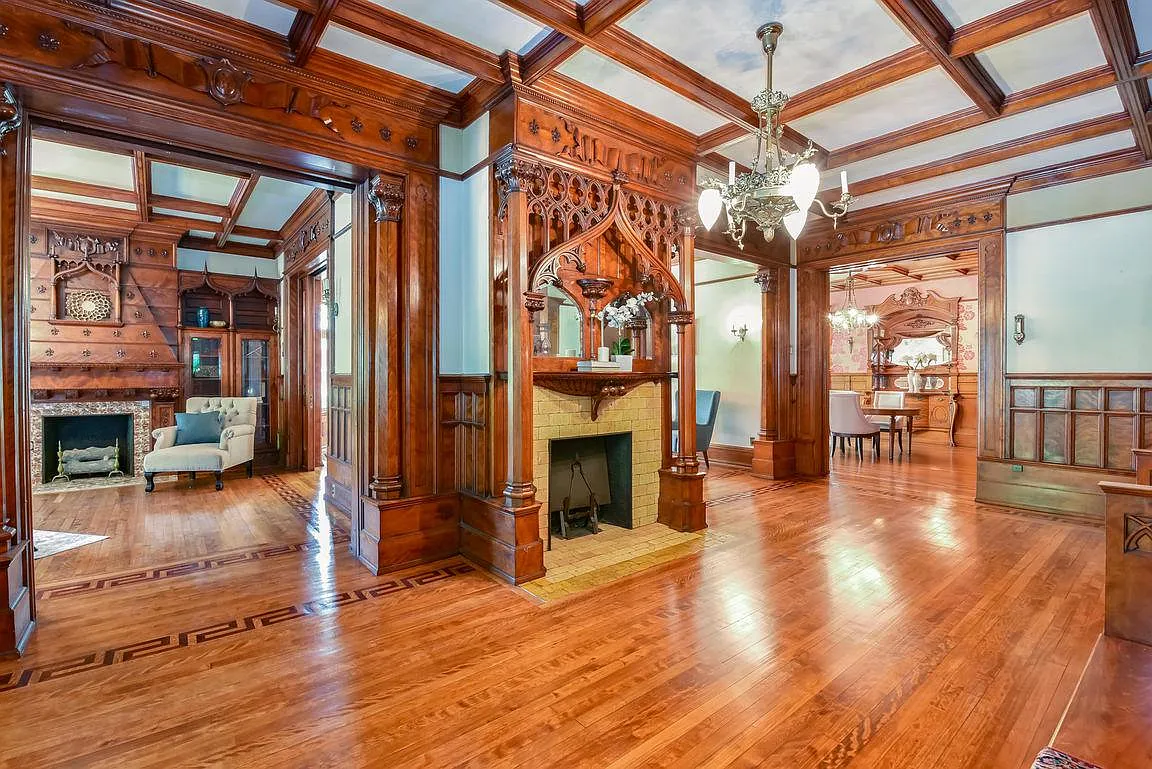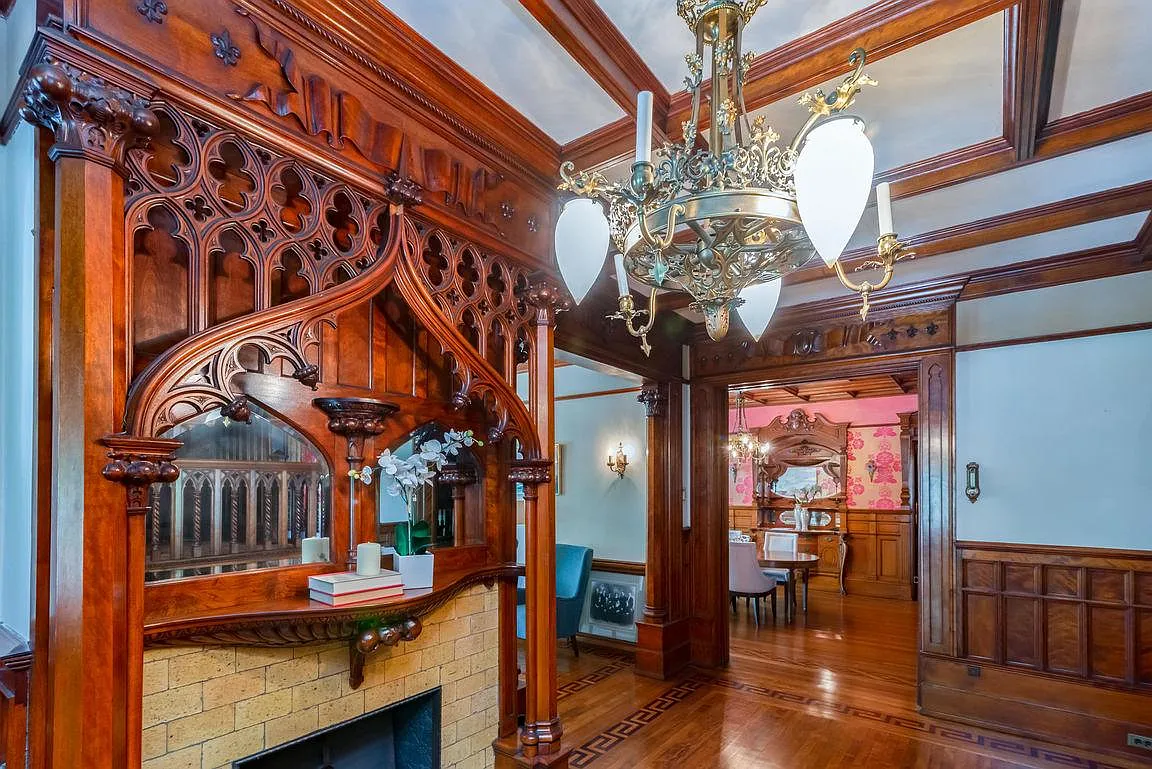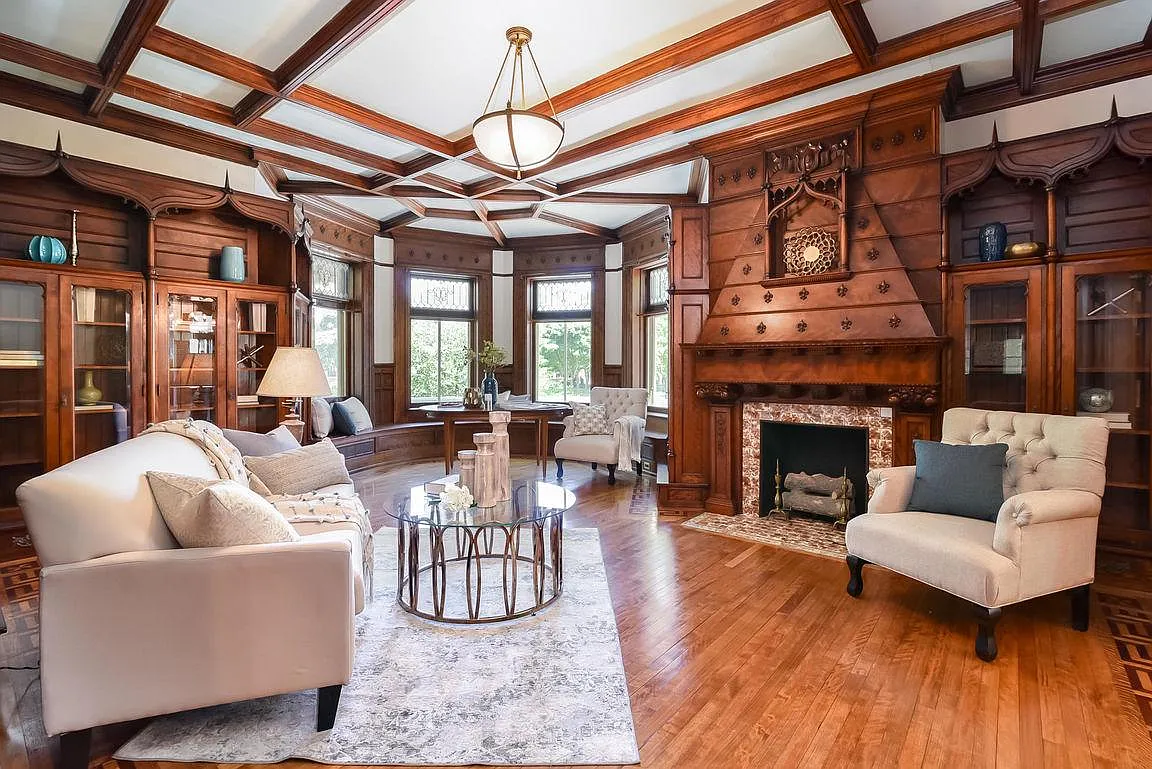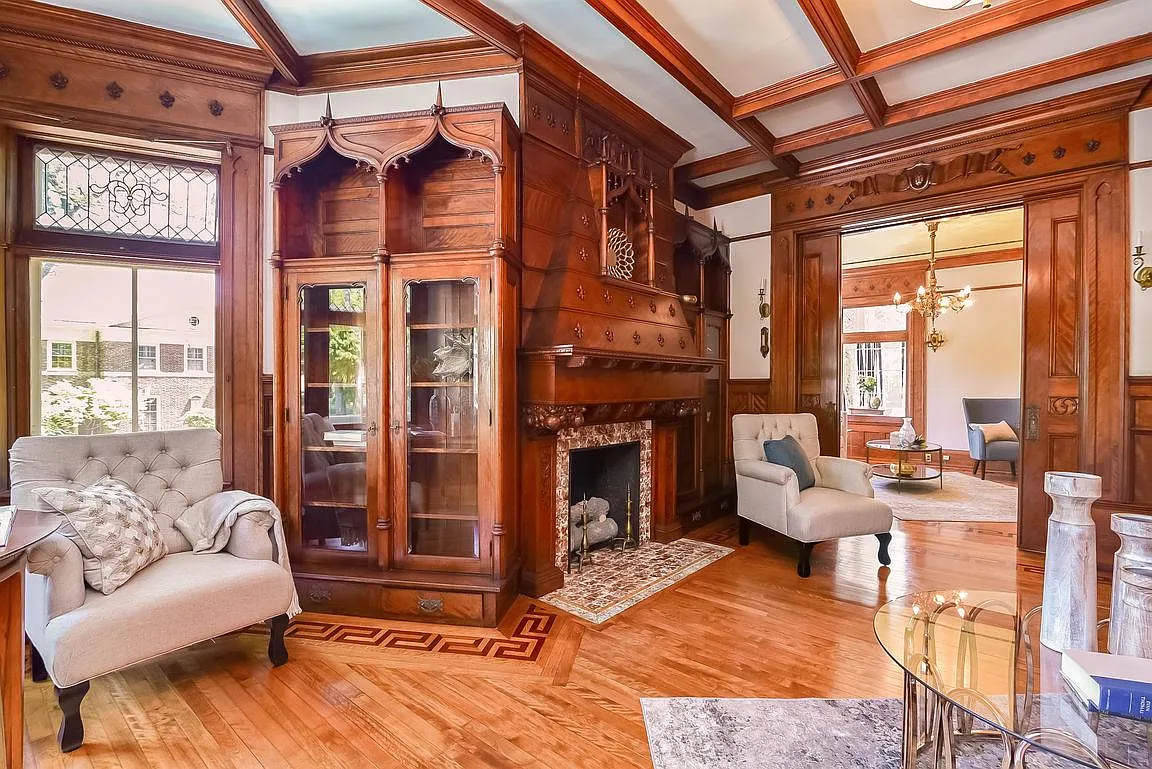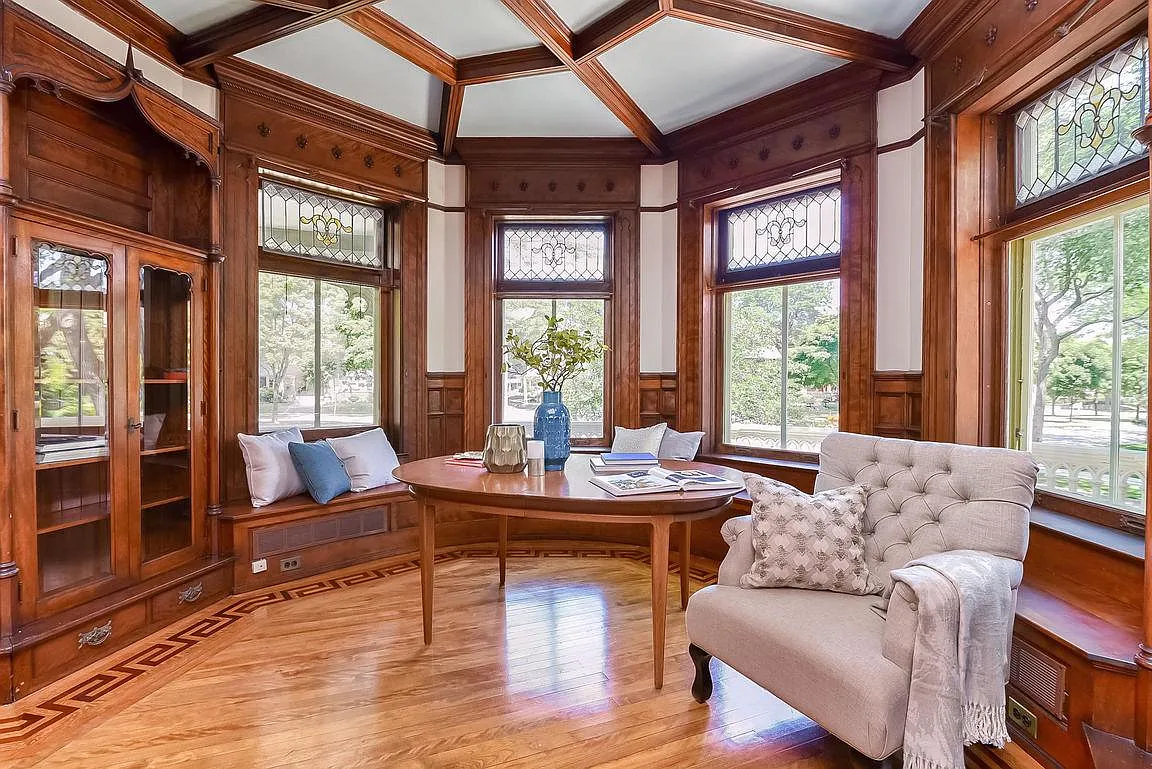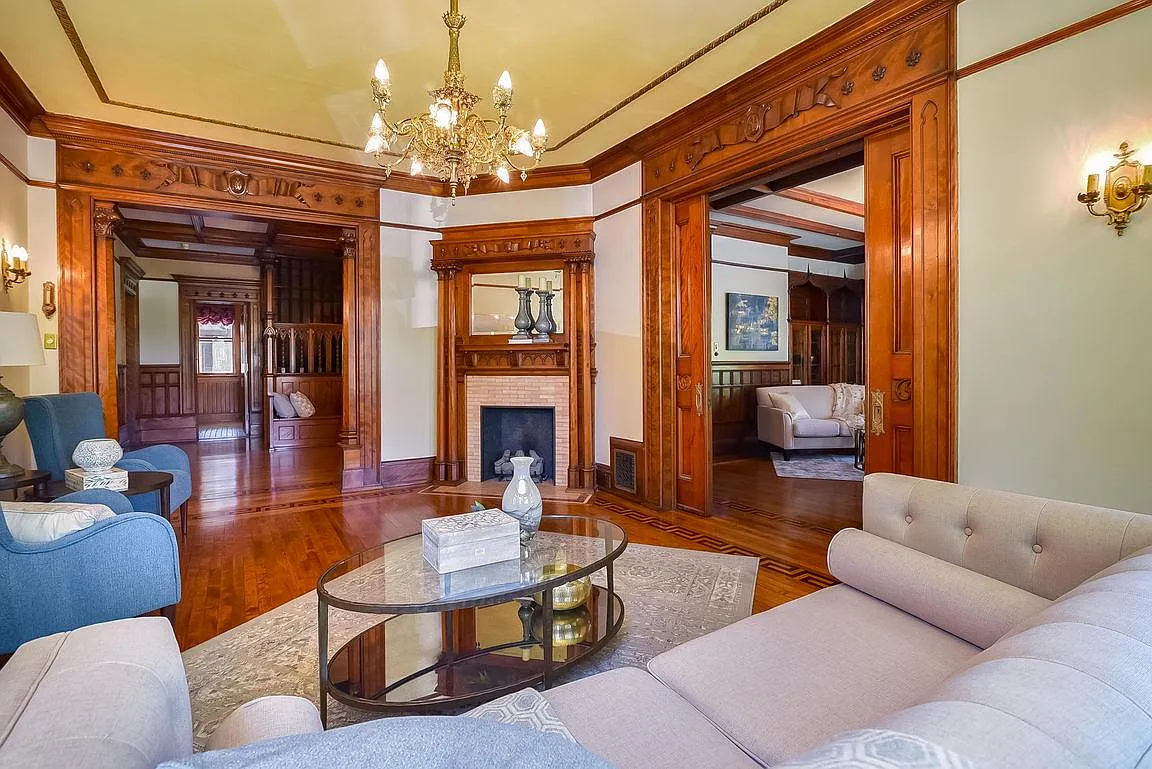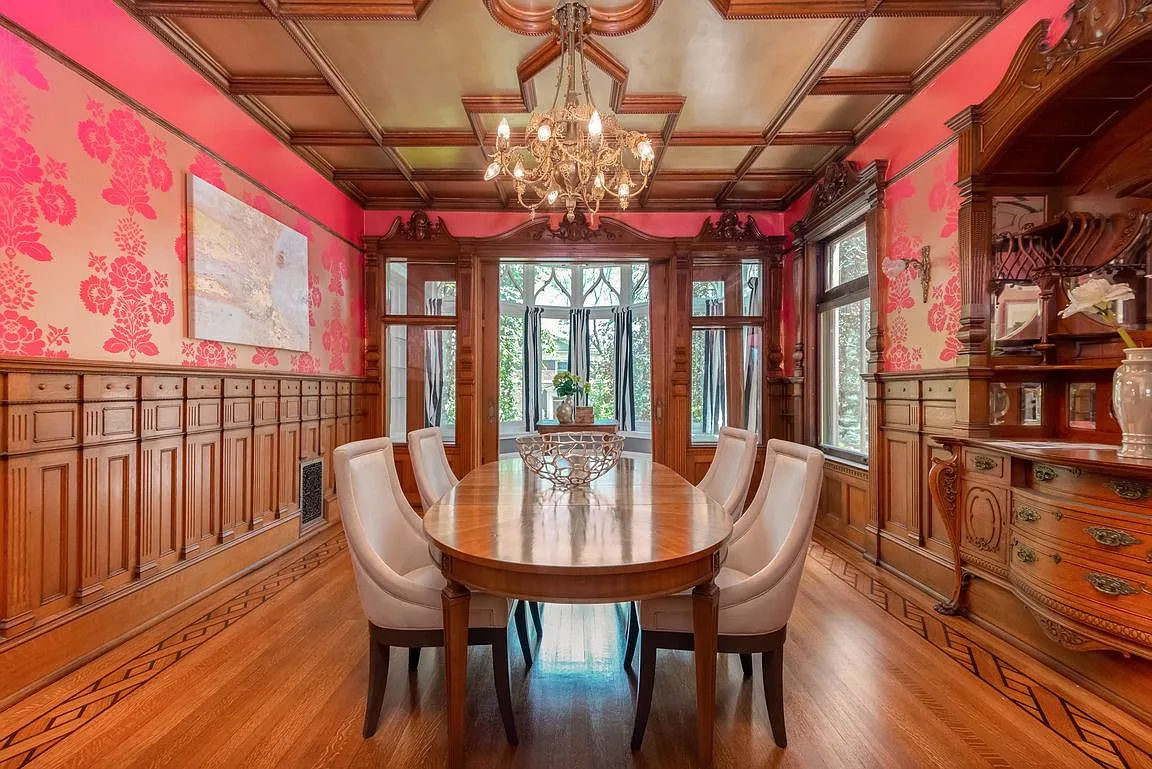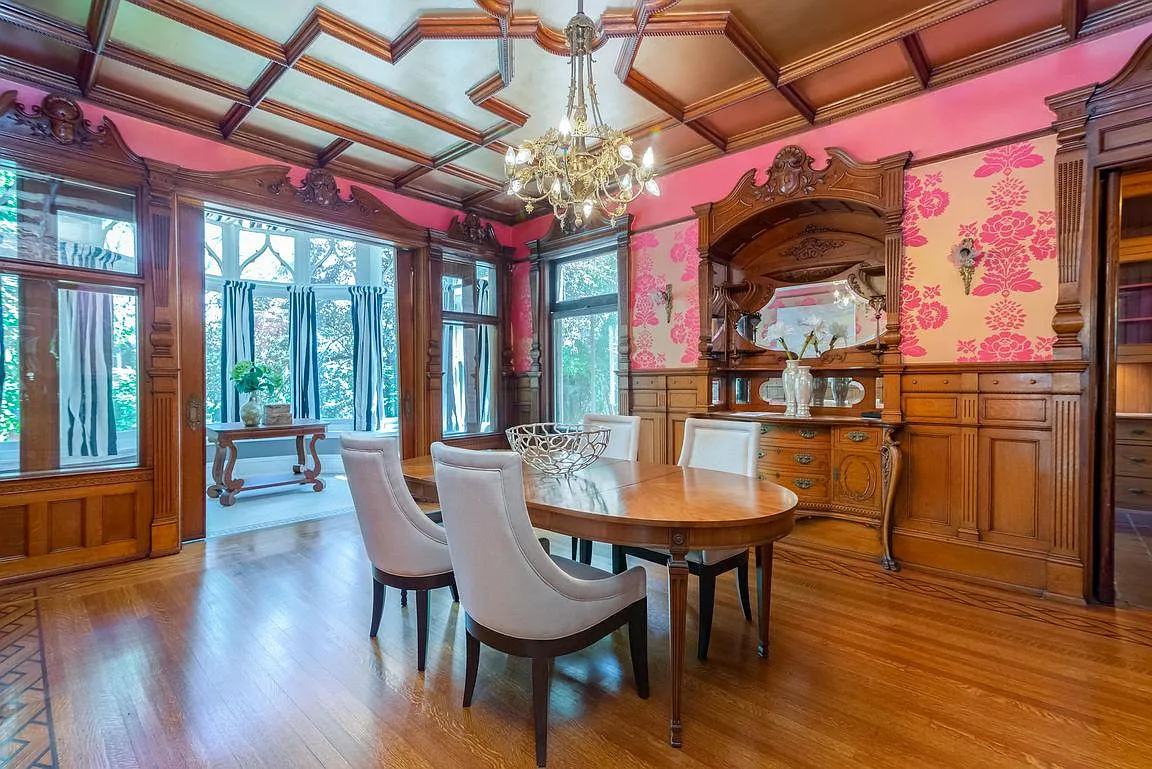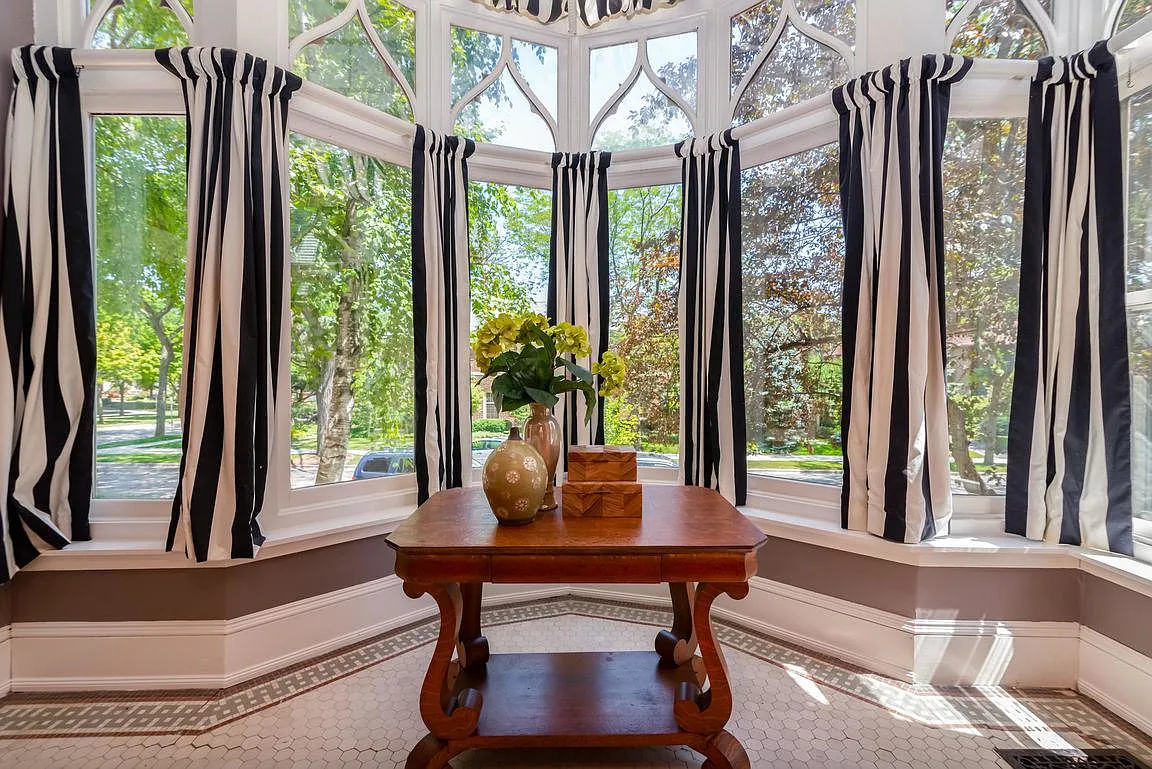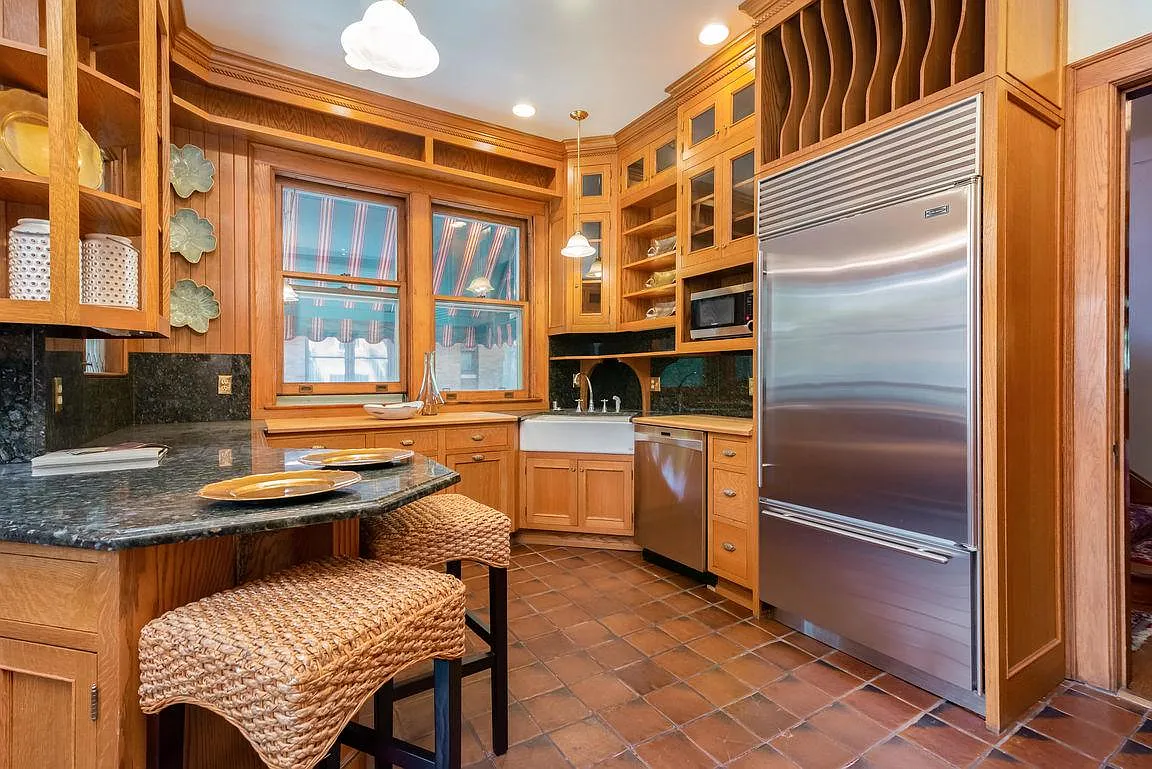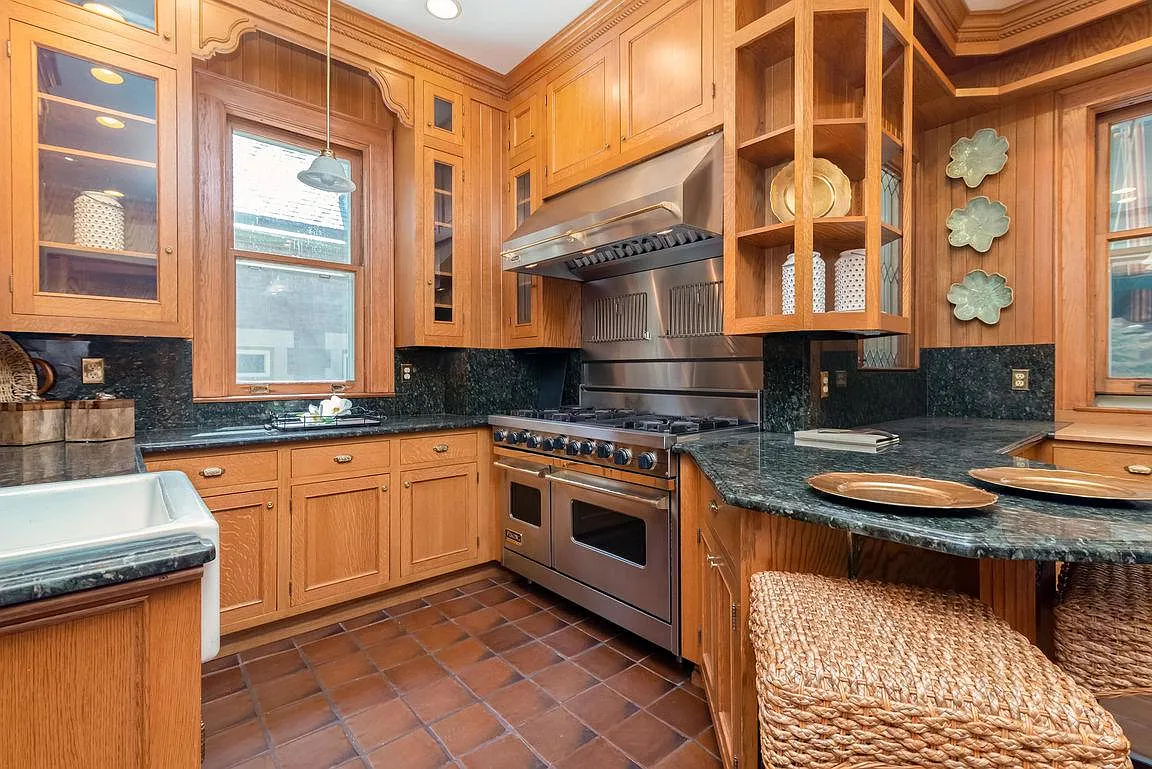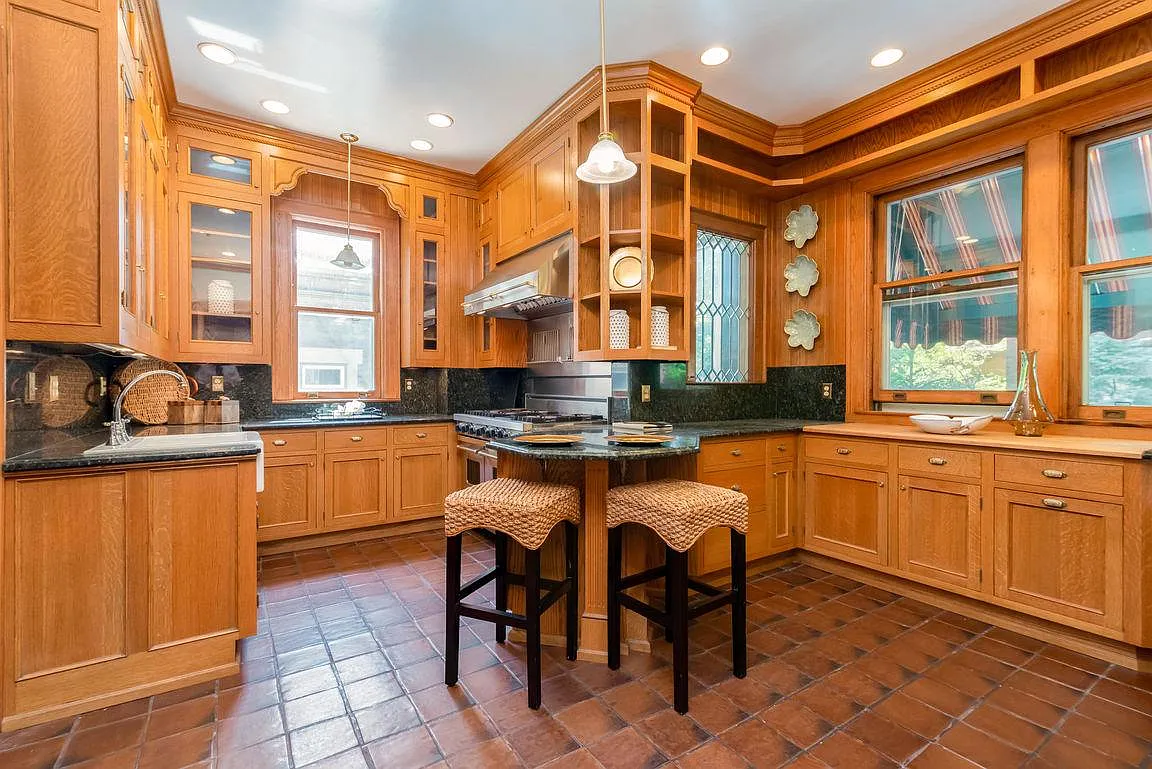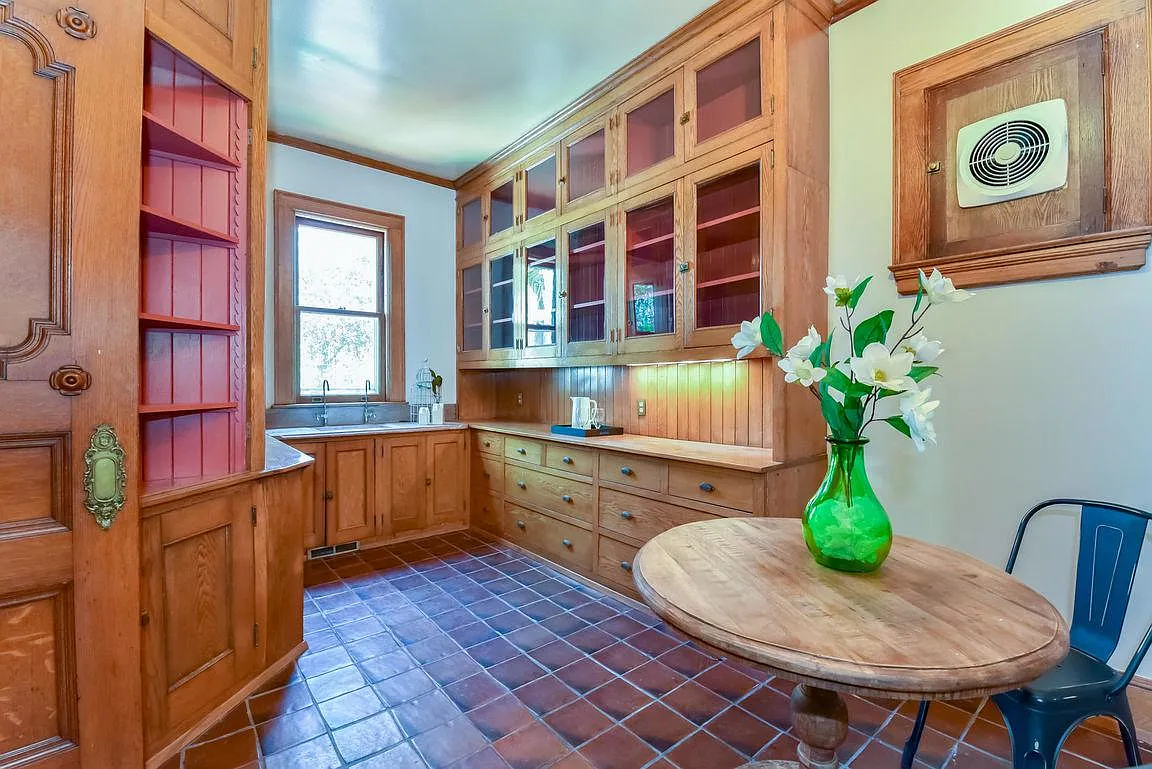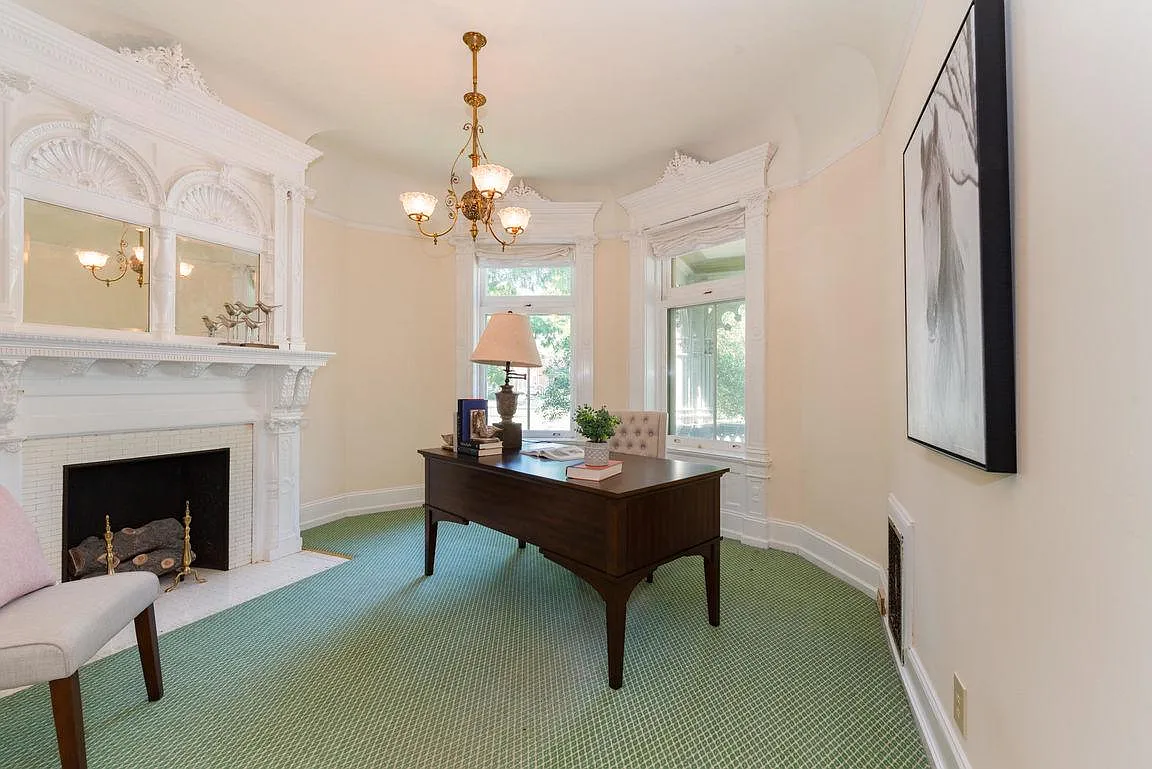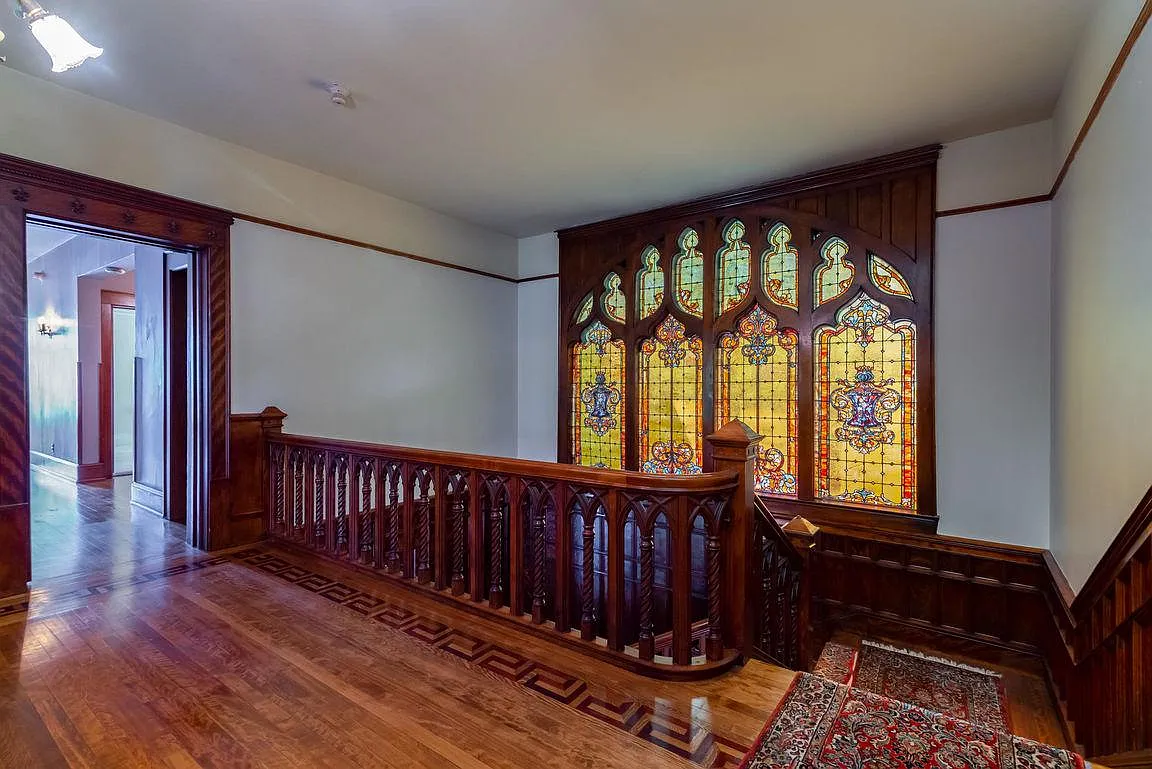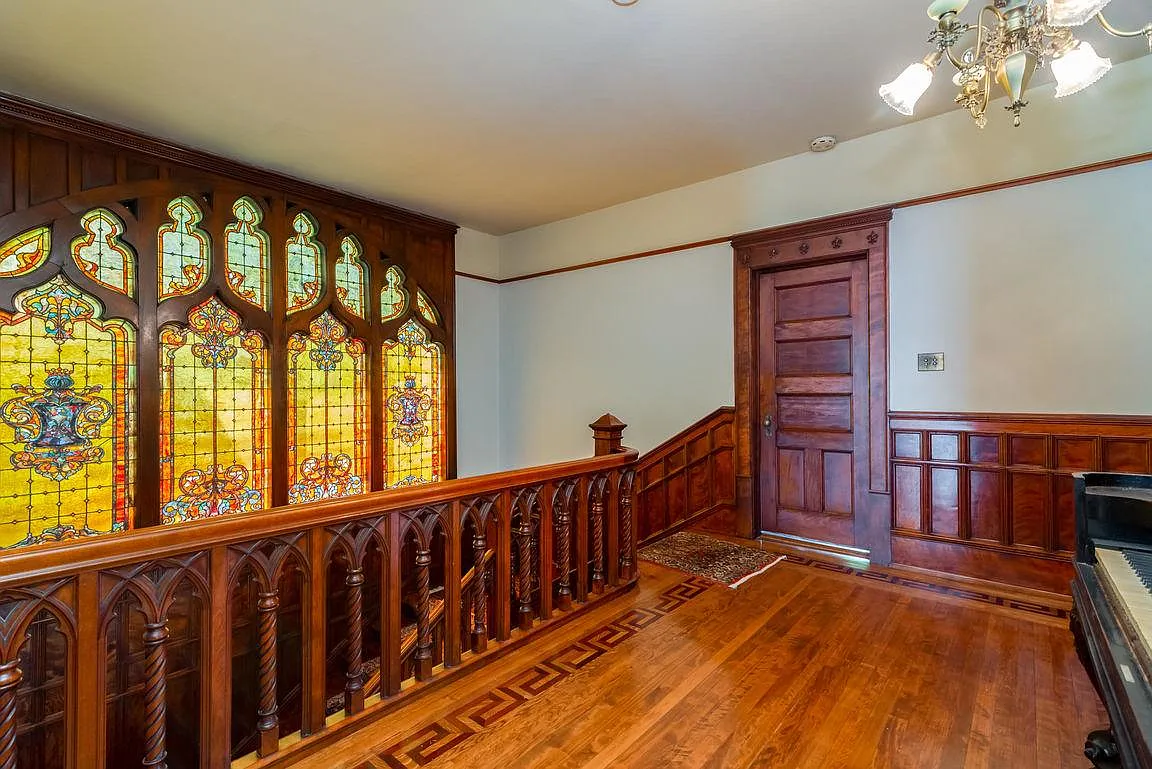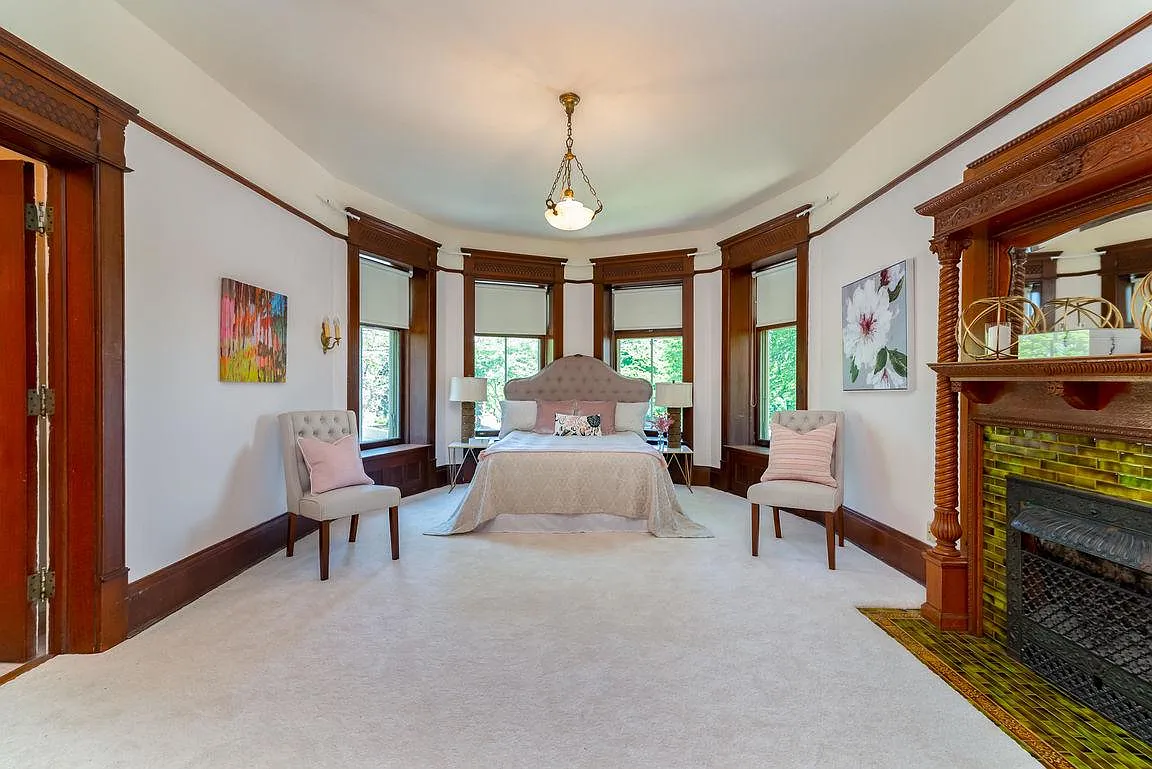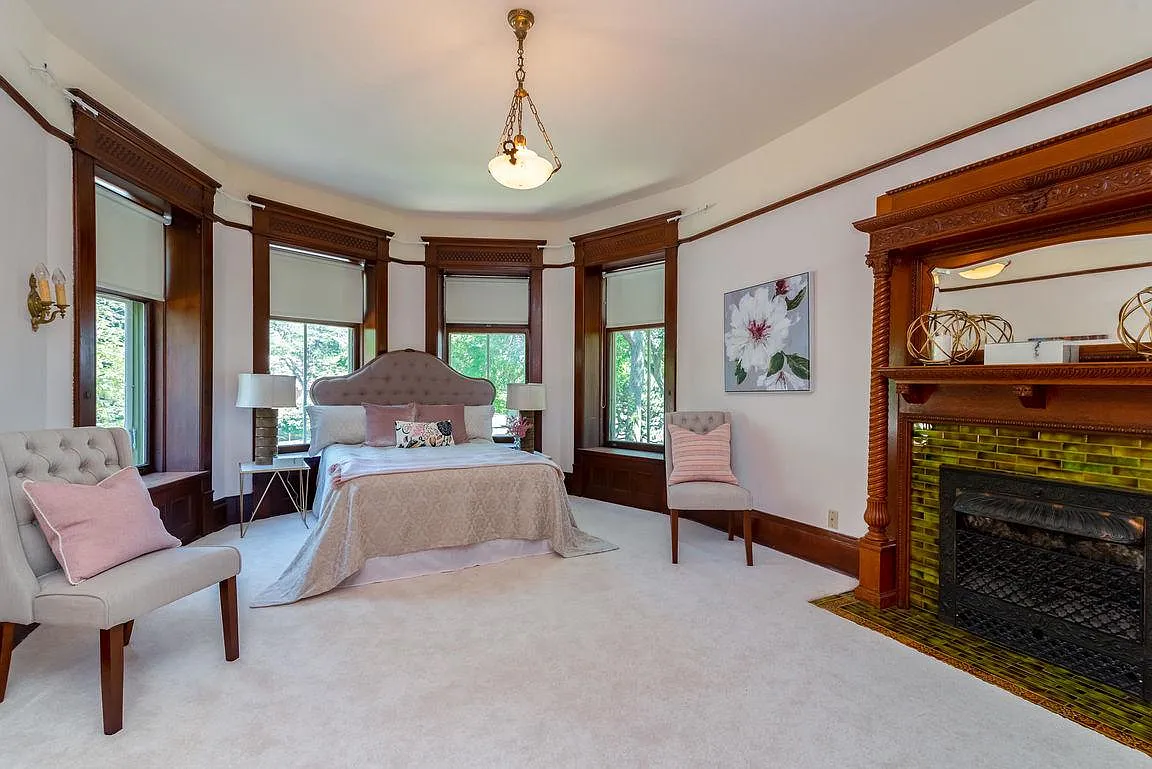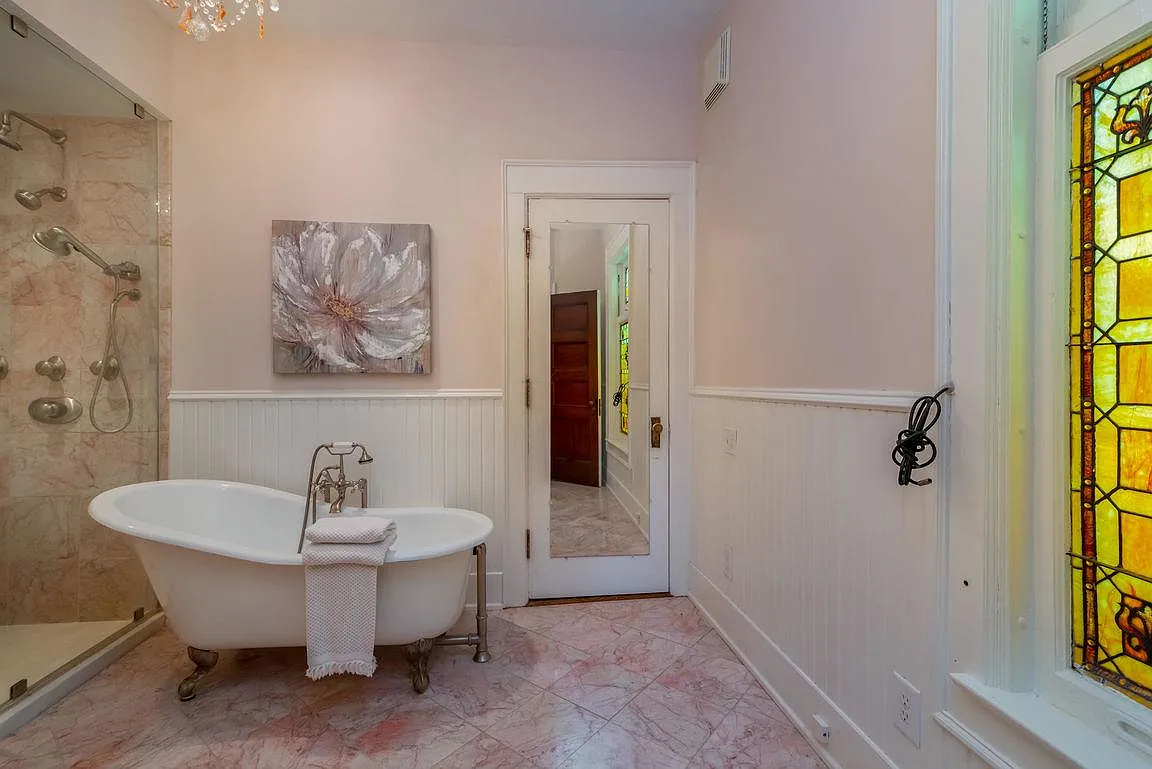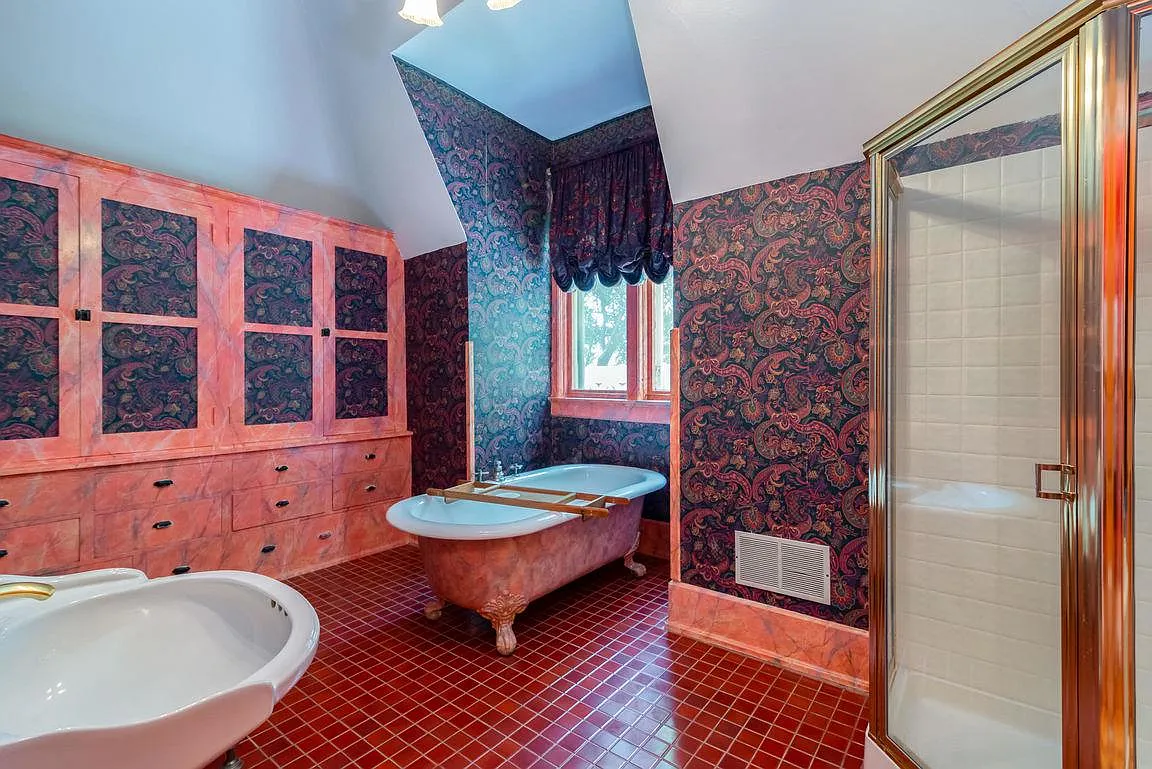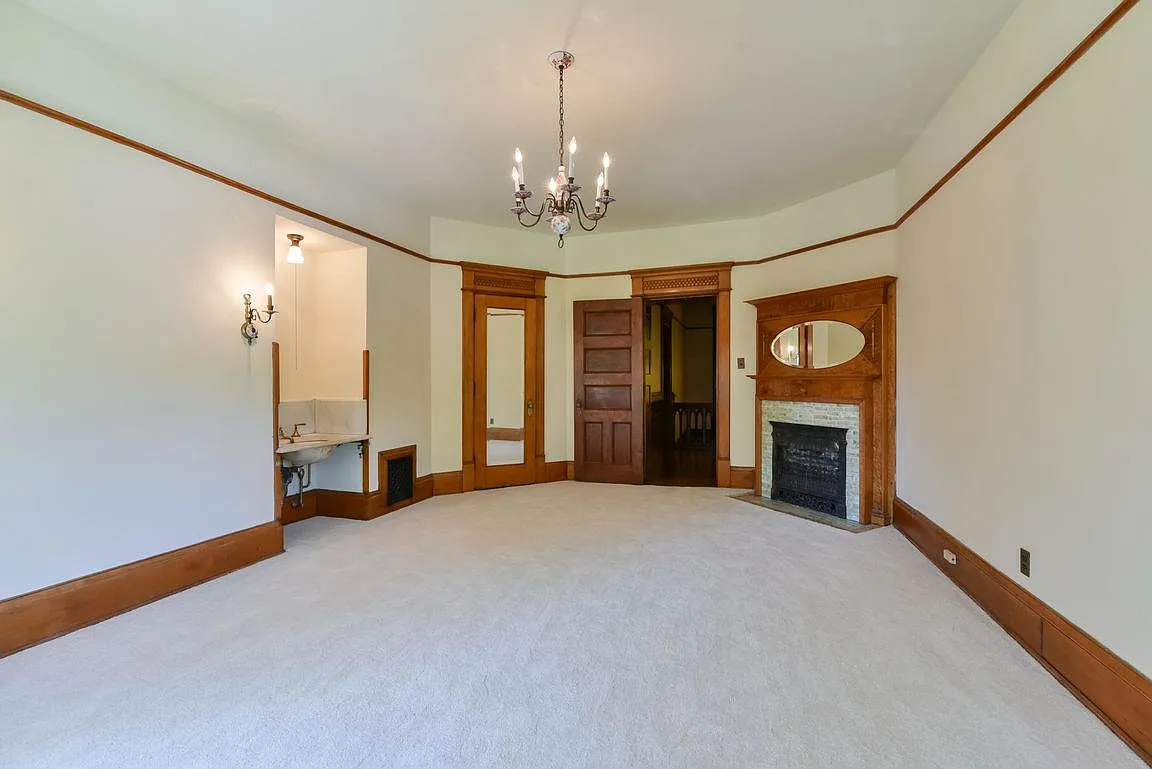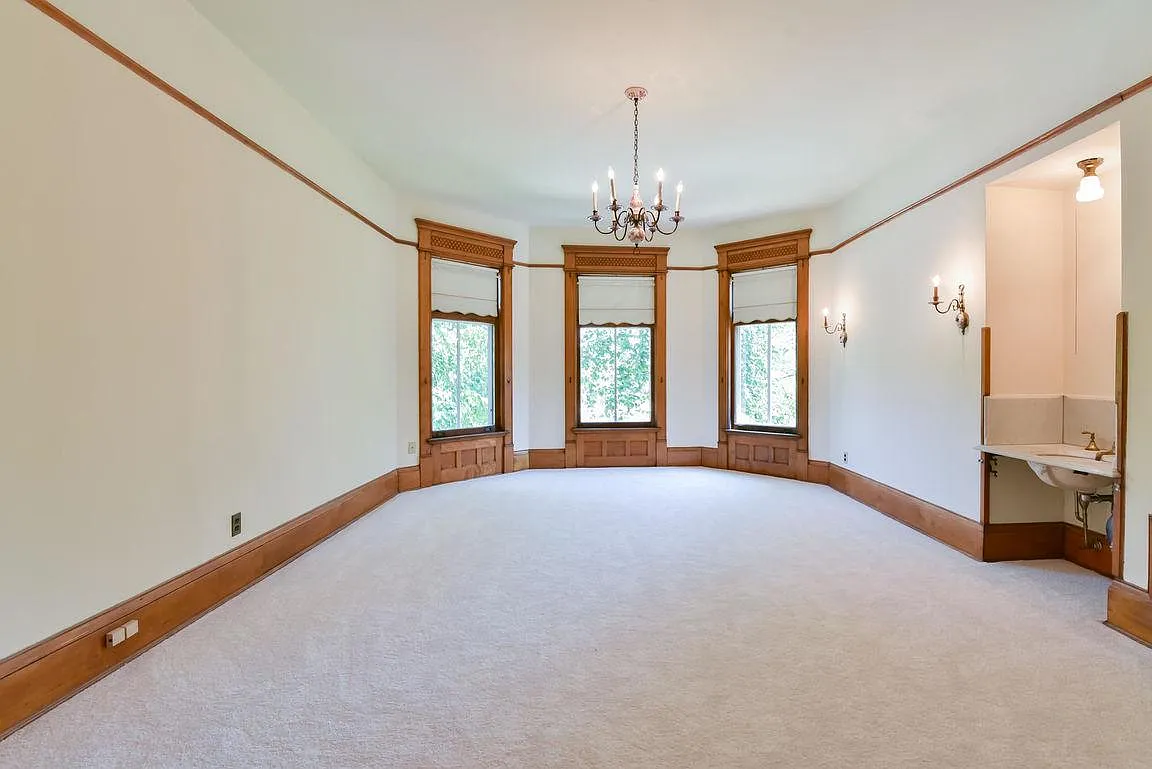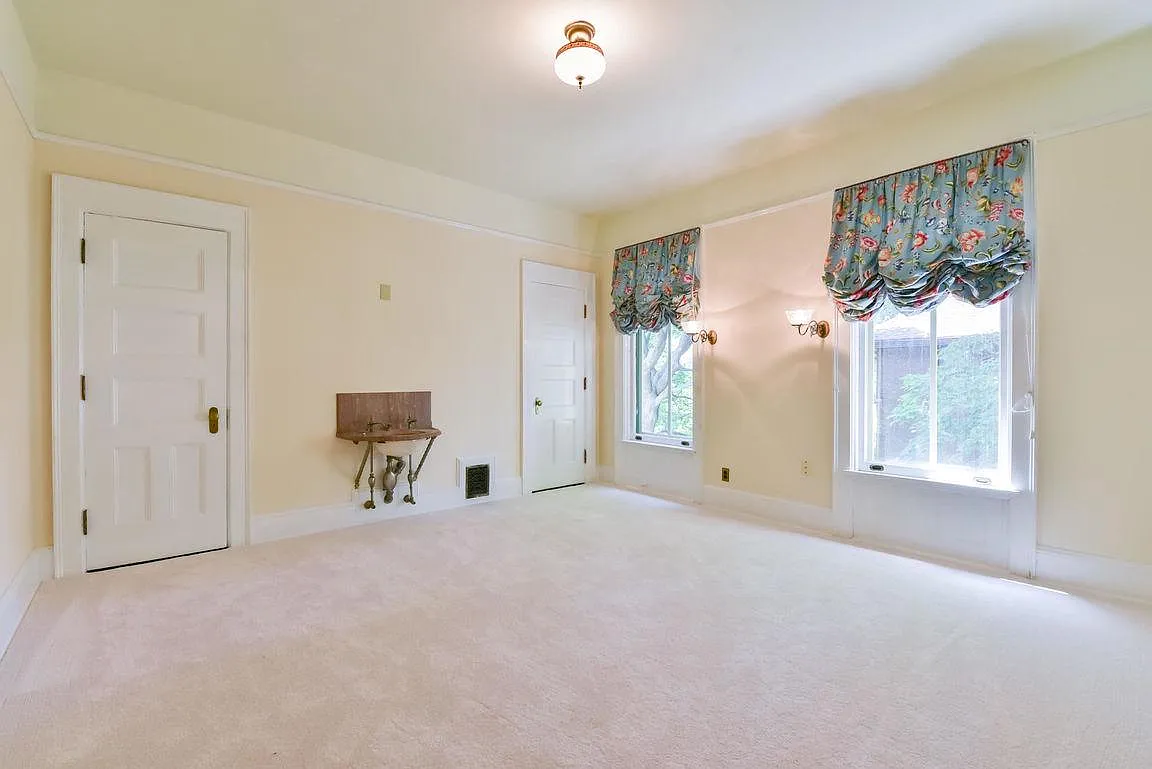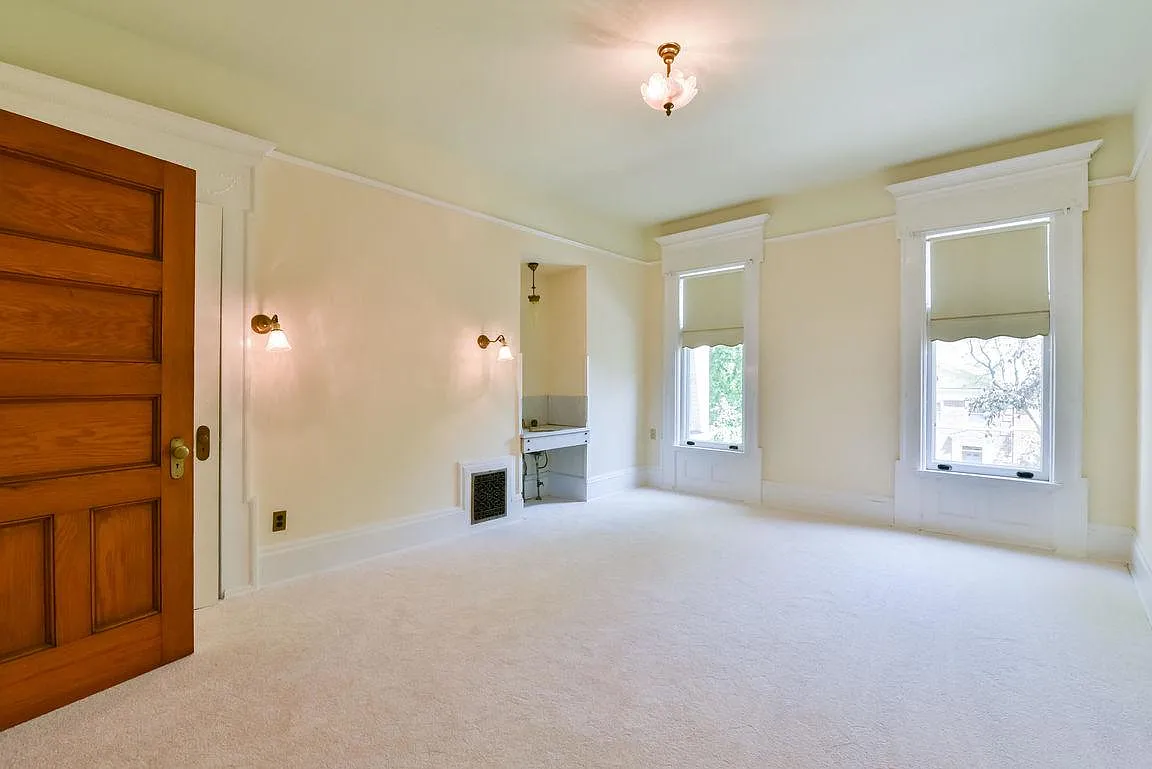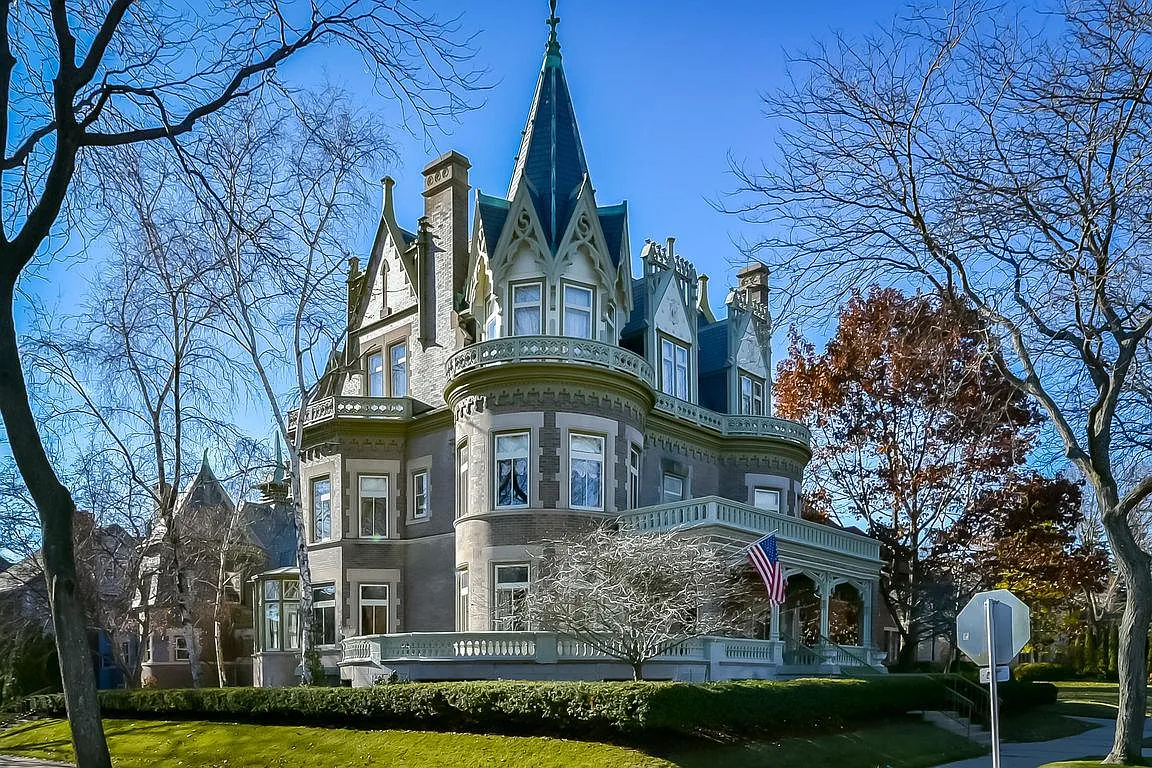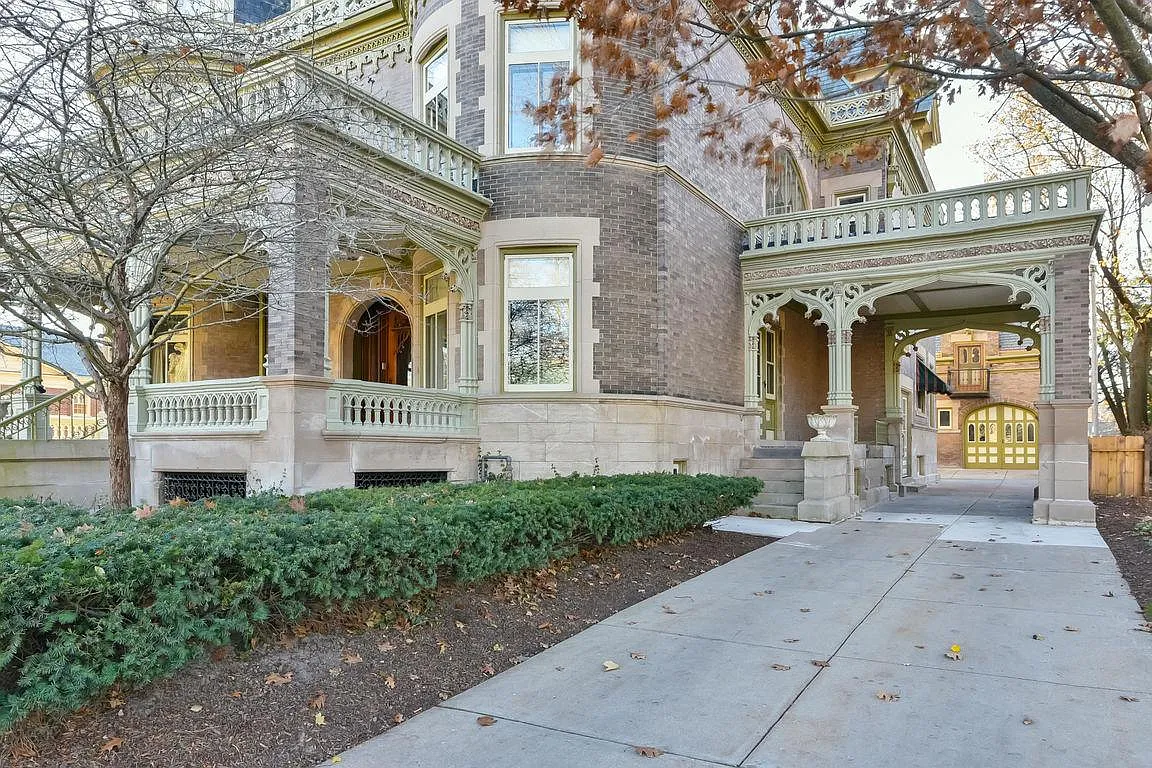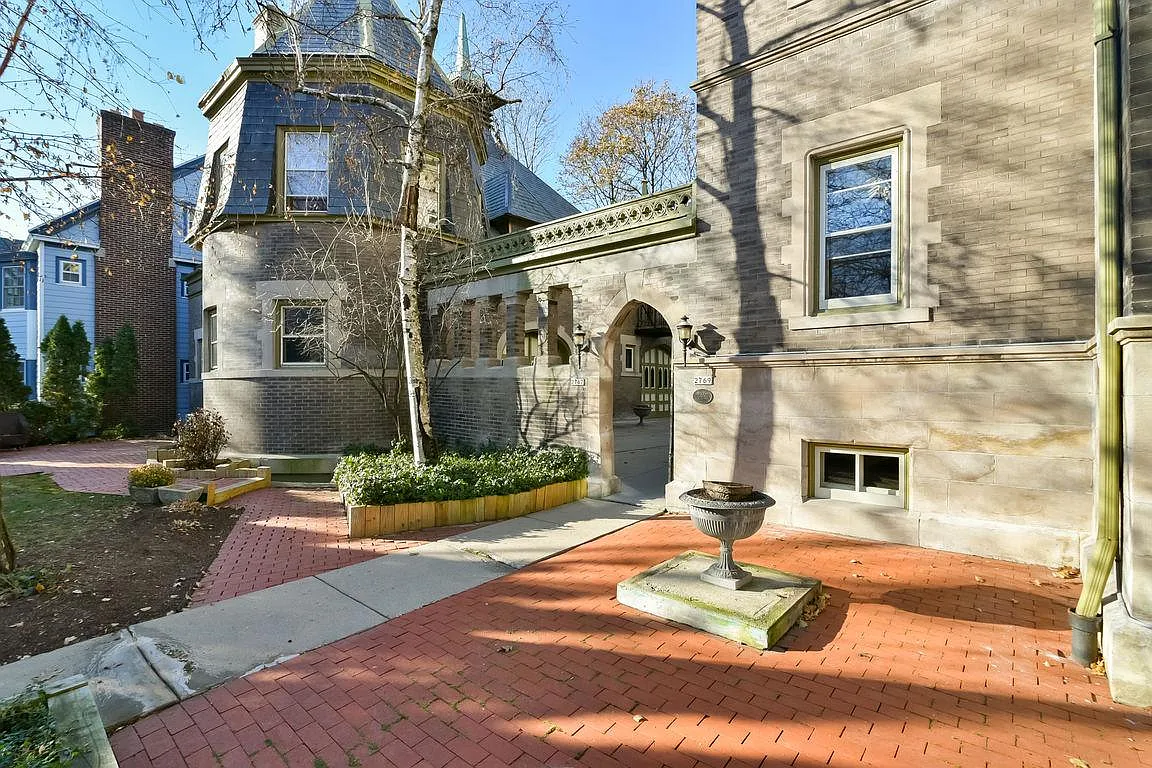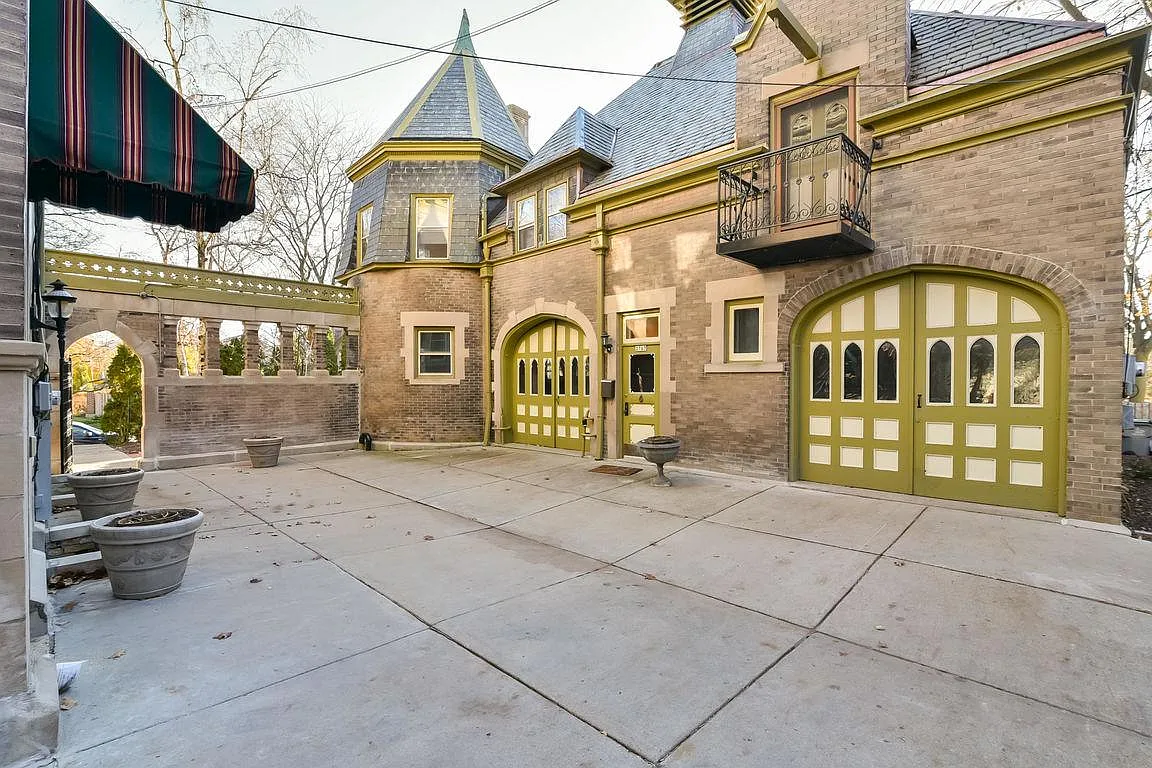The Goldberg Mansion, an architectural gem nestled on East Newberry Boulevard, stands as a testament to the grandeur of late 19th-century design and the storied history of Milwaukee. Designed by the talented architects John A. Moller and George C. Ehlers and built by J.P. Jones in 1896, the mansion was originally commissioned by attorney Benjamin Goldberg. As the first home built on East Newberry Boulevard, the mansion set the tone for the neighborhood’s development and remains a landmark in the city.
Architectural Significance
The Goldberg Mansion is a striking example of French Revival architecture, infused with elements of Châteauesque and Victorian styles. The mansion’s design reflects the eclectic tastes of the era, blending the ornate and romantic features of French châteaux with the verticality and intricate detailing characteristic of Victorian homes. The result is a visually stunning structure that commands attention with its multiple gables, finials, and turrets, all of which harken back to the opulence of the Victorian era.
One of the most remarkable aspects of the Goldberg Mansion is the level of craftsmanship that went into its construction. The home features hand-carved trim and built-ins, detailed hardwood flooring, and a grand staircase that serves as the centerpiece of the interior. The staircase, with its intricate woodwork and massive stained glass windows, is a work of art in its own right, showcasing the skill of the artisans who contributed to the mansion’s construction. This level of detail is rarely seen in modern homes, making the Goldberg Mansion a unique and irreplaceable piece of architectural history.
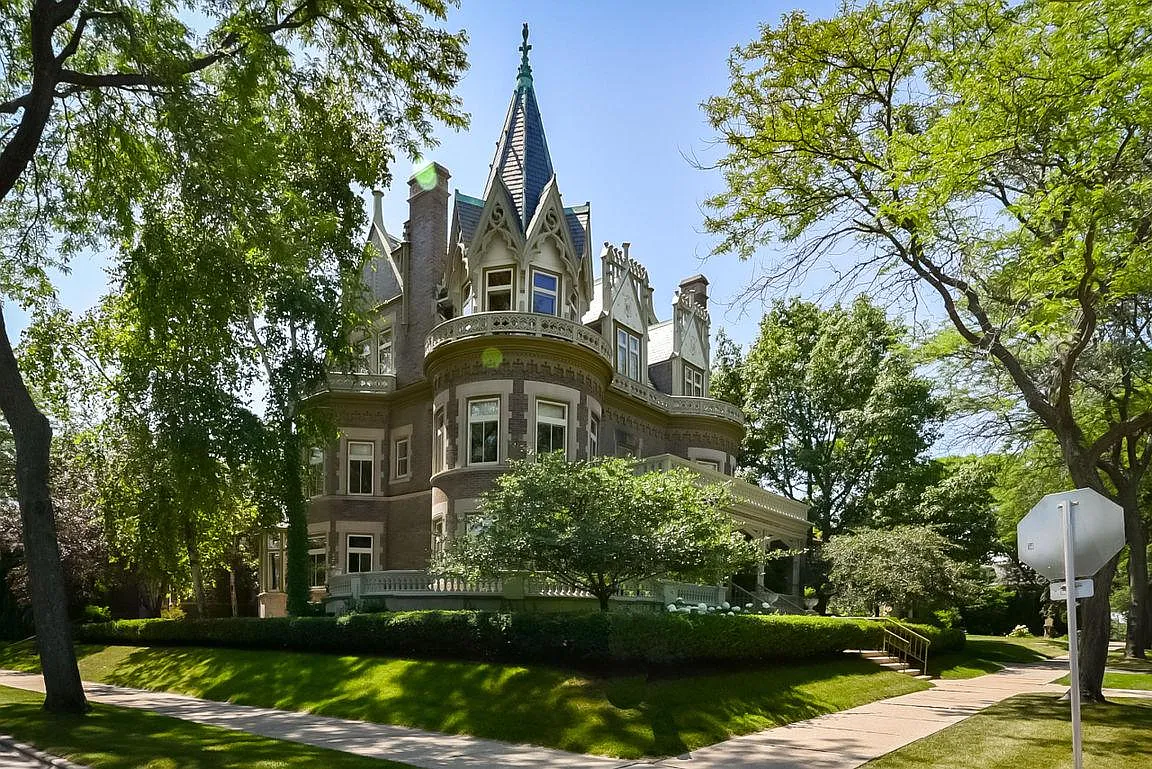
A Turbulent History
Despite its grandeur, the Goldberg Mansion’s history is marked by financial difficulties and legal troubles. Benjamin Goldberg, the original owner, was a prominent attorney in Milwaukee. However, his career took a sharp downturn when he was disbarred after facing 19 charges, a scandal that left him financially ruined. Unable to complete the mansion, Goldberg was forced to abandon the property, leaving it unfinished for a period of time.
In 1898, the mansion was sold at a loss to George Martin Jr., marking the end of Goldberg’s ownership and the beginning of a new chapter for the property. Under Martin’s ownership, the mansion was completed and eventually became one of the most admired homes in the area. However, the shadow of its troubled beginnings remained a part of its lore, adding to the mystique of the mansion.
Restoration and Modernization
Over the years, the Goldberg Mansion has undergone significant restoration to preserve its historical integrity while also modernizing it for contemporary living. The restoration work has been done with great care, ensuring that the mansion’s original features, such as the hand-carved woodwork and stained glass windows, were preserved and restored to their former glory.
The interior of the mansion has been updated with modern amenities, including a chef’s kitchen with granite countertops, an 8-burner Viking stove, a Sub-Zero refrigerator, and a butler’s pantry. The master bathroom has been outfitted with marble finishes and a clawfoot tub, blending luxury with historical charm. The third floor of the mansion, once a ballroom, has been converted into a family room and additional bedrooms, providing ample space for living and entertaining.
The property also includes a two-story Châteauesque carriage barn, which is a significant feature in its own right. According to Wisconsin History, the barn retains its original hand-operated carriage elevator, a rare and fascinating piece of history that was originally used to hoist vehicles from the ground floor to storage in the loft. This unique feature adds to the mansion’s charm and underscores the attention to detail that went into its design and construction.
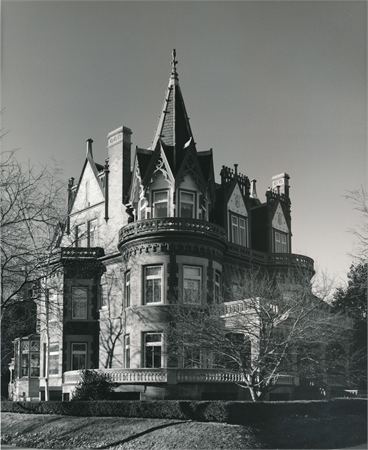
The Coach House
In addition to the main mansion, the property includes a coach house that has been converted into a two-bedroom, one-bathroom living space. The coach house generates approximately $18,000 per year in income, providing a practical benefit in addition to its historical significance. This secondary dwelling adds to the versatility of the property, making it suitable for a variety of uses, from guest accommodations to rental income.
The Goldberg Mansion Today
The Goldberg Mansion remains a private residence, beautifully restored and maintained. Its last recorded sale was in 2020, when it was purchased for $1.1 million. This sale reflects the enduring appeal of the property, which continues to captivate those who appreciate fine architecture and historical significance.
Located just a short walk from the Downer Shops, restaurants, Sendik’s grocery store, and the historic Downer Theater, the Goldberg Mansion is ideally situated for those who value both history and convenience. The mansion is also just three blocks from Lake Park and the lakefront, offering easy access to some of Milwaukee’s most scenic outdoor spaces.
Though not currently for sale or rent, the Goldberg Mansion stands as a shining example of the architectural and historical treasures that Milwaukee has to offer. Its blend of French Revival, Châteauesque, and Victorian styles, combined with its rich history and meticulous restoration, make it a true jewel of the city—a place where the past and present seamlessly come together in a celebration of timeless beauty and craftsmanship.
